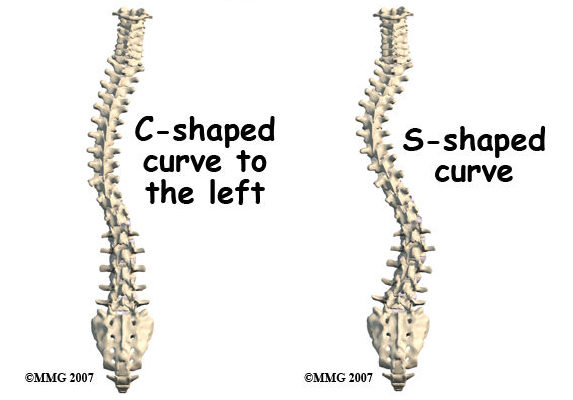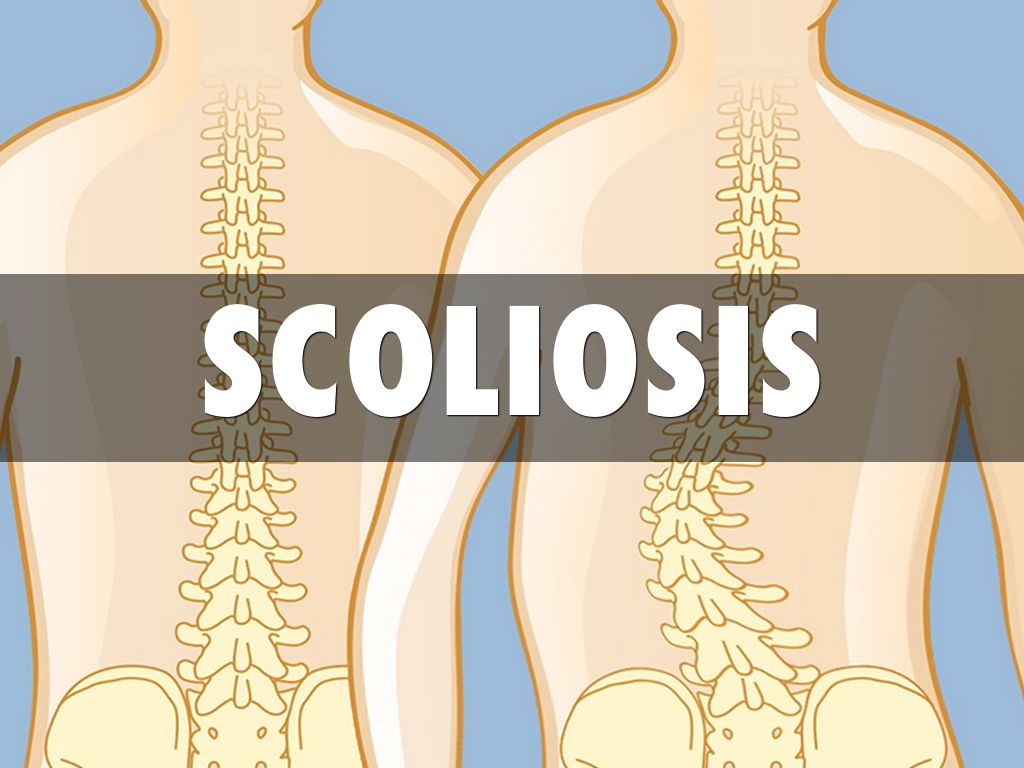Scoliosis is a condition that affects the curvature of the spine, causing it to curve sideways. It is a complex condition that can have a significant impact on a person’s life. In this article, we will explore various aspects of scoliosis, including its definition, prevalence, types, causes, symptoms, diagnosis, treatment options, and the impact it has on posture, exercise, and daily living.
脊柱側湾症とは?
Scoliosis is a medical condition characterized by an abnormal curvature of the spine. Instead of the spine being straight, it curves sideways, forming an “S” or “C” shape. This curvature can occur in any part of the spine, including the upper back (thoracic), lower back (lumbar), or both. Scoliosis can affect people of all ages, but it most commonly develops during adolescence.

脊柱側湾症の有病率
Scoliosis is more common than you might think. According to the Scoliosis Research Society, approximately 2-3% of the population has scoliosis. This means that millions of people worldwide are living with this condition. It is important to note that scoliosis can vary in severity, with some cases being mild and others requiring more intensive treatment.
脊柱側湾症の種類
There are several types of scoliosis, each with its own unique characteristics. The most common type is idiopathic scoliosis, which means that the cause is unknown. Idiopathic scoliosis can develop during adolescence (adolescent idiopathic scoliosis) or in adulthood (adult idiopathic scoliosis). Other types of scoliosis include congenital scoliosis (present at birth), neuromuscular scoliosis (caused by conditions such as cerebral palsy or muscular dystrophy), and degenerative scoliosis (caused by wear and tear on the spine).

脊柱側湾症の原因
While the exact cause of idiopathic scoliosis is unknown, researchers believe that a combination of genetic and environmental factors may contribute to its development. In some cases, scoliosis can be caused by underlying conditions such as muscular dystrophy or cerebral palsy. Congenital scoliosis is caused by abnormal spinal development in the womb.
Symptoms and Signs of Scoliosis
In many cases, scoliosis does not cause any noticeable symptoms. However, as the curvature of the spine worsens, some common signs may appear. These include uneven shoulders, a prominent shoulder blade, uneven waist, leaning to one side, and an asymmetrical ribcage. Some individuals may also experience back pain, muscle fatigue, or difficulty breathing if the curvature affects the chest area.
Diagnosis and Screening for Scoliosis
Early detection of scoliosis is crucial for effective treatment. Screening for scoliosis typically involves a physical examination, where a healthcare professional will assess the curvature of the spine and look for any signs of scoliosis. If scoliosis is suspected, further diagnostic tests such as X-rays or MRI scans may be ordered to determine the severity and type of scoliosis.
脊柱側湾症の治療法
The treatment options for scoliosis depend on various factors, including the severity of the curvature, the age of the individual, and the underlying cause. Mild cases of scoliosis may not require any treatment and can be monitored regularly. However, more severe cases may require intervention. Treatment options include observation, bracing, and surgery.
Bracing for Scoliosis
Bracing is a common treatment option for adolescents with moderate scoliosis. The goal of bracing is to prevent the curvature from worsening as the individual grows. Braces are typically worn for several hours a day and can be customized to fit the individual’s body shape. While bracing can be uncomfortable and may impact daily activities, it can be effective in preventing the need for surgery in some cases.

Surgical Interventions for Scoliosis
In severe cases of scoliosis, surgery may be necessary to correct the curvature of the spine. The most common surgical procedure for scoliosis is spinal fusion, where the vertebrae are fused together using metal rods, screws, or hooks. This procedure aims to straighten the spine and prevent further progression of the curvature. While surgery can be a significant undertaking, it can provide long-term benefits for individuals with severe scoliosis.
Scoliosis and Posture
Scoliosis can have a significant impact on posture. As the spine curves, it can cause the shoulders, hips, and waist to become uneven. This can lead to a noticeable asymmetry in the individual’s posture. It is important for individuals with scoliosis to be mindful of their posture and engage in exercises and stretches that promote proper alignment.
Scoliosis and Exercise
Contrary to popular belief, exercise is beneficial for individuals with scoliosis. Engaging in regular physical activity can help improve muscle strength, flexibility, and overall posture. However, it is important to consult with a healthcare professional or physical therapist to develop a personalized exercise plan that takes into account the individual’s specific needs and limitations.
Living with Scoliosis
Living with scoliosis can be challenging, both physically and emotionally. Individuals with scoliosis may face physical limitations, discomfort, and self-consciousness about their appearance. However, with the right support and treatment, many individuals with scoliosis are able to lead fulfilling lives. Support groups, counseling, and adaptive equipment can all play a role in helping individuals with scoliosis navigate the challenges they may face.
In conclusion, scoliosis is a complex condition that affects the curvature of the spine. It can have a significant impact on a person’s life, but with early detection and appropriate treatment, individuals with scoliosis can lead fulfilling lives. Understanding the unique aspects and surprising details about scoliosis can help raise awareness and promote better care for those living with this condition.
参考文献
- Weinstein, S. L., Dolan, L. A., Cheng, J. C., et al. “Adolescent idiopathic scoliosis.” ランセット.2008;371(9623):1527-1537: 10.1016/S0140-6736(08)60658-3
- Hresko, M. T. “Clinical practice. Idiopathic scoliosis in adolescents.” ニューイングランド・ジャーナル・オブ・メディシン.2013;368(9):834-841: 10.1056/NEJMcp1209063
- Negrini, S., Donzelli, S., Aulisa, A. G., et al. “2016 SOSORT guidelines: Orthopaedic and rehabilitation treatment of idiopathic scoliosis during growth.” 脊柱側湾症と脊椎疾患.2018;13:3: 10.1186/s13013-018-0175-8
- Bunnell, W. P. “Selectivity in screening for scoliosis.” 骨・関節外科ジャーナル. 2005;87(9):1957-1962. doi: 10.2106/00004623-200509000-00001
- Lonstein, J. E., Carlson, J. M. “The prediction of curve progression in untreated idiopathic scoliosis during growth.” 骨・関節外科ジャーナル.1984;66(7):1061-1071: 10.2106/00004623-198466070-00008
- Richards, B. S., Vitale, M. G. “Screening for idiopathic scoliosis in adolescents: An information statement.” 骨・関節外科ジャーナル. 2008;90(1):195-198. doi: 10.2106/JBJS.H.00452
- Sanders, J. O., Newton, P. O., Browne, R. H., et al. “Preoperative trunk deformity in patients with idiopathic scoliosis.” 背骨. 2003;28(14):1585-1591. doi: 10.1097/01.BRS.0000070452.07893.8B
- Miller, M. D., Thompson, S. R. DeLee & Drez’s Orthopaedic Sports Medicine: Principles and Practice. 5th ed. Philadelphia: Elsevier; 2019.
- U.S. Preventive Services Task Force (USPSTF). “Screening for Adolescent Idiopathic Scoliosis: Recommendation Statement.” 日本自動車工業会. 2018;319(2):165-172. doi: 10.1001/jama.2017.19342
- Skaggs, D. L., Early, S. D., D’Ambra, P., et al. “The incidence of post-surgical complications in scoliosis surgery based on a prospective pediatric scoliosis database.” 小児整形外科ジャーナル. 2002;22(2):214-217. doi: 10.1097/01241398-200203000-00016

